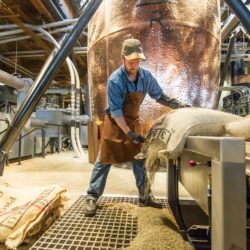Visibility improves trust in food supply chain

Scandals such as melamine in Chinese baby milk and horse meat labelled as beef have intensified the trend towards transparency and sustainability in the food sector. Consumers are demanding insight into the supply chain, which is forcing companies to provide transparency about the origin of goods and how products have reached retail shelves. Visibility is key in regaining consumer trust.
By Marysa Vos
In Europe, food is a billion-dollar industry in which the ongoing demand for ever-cheaper products places extra pressure on the supply chain. Food is sourced as cheaply as possible from all over the world, with nothing but the label to go on. The rising focus on price makes it increasingly tempting to cut corners, and that has resulted in scandals such as melamine in Chinese baby milk in 2008 and horse meat being passed off as beef in 2013. Thanks to the internet, news of these scandals spread throughout Europe like wildfire. Both scandals are seen as symptomatic of the malpractices in the food sector to this day.
The affairs highlighted the fact that the food supply chain is a complex one with links in numerous countries, often with a lack of traceability and visibility. This served as a wake-up call for the food industry and consumers alike. In the years following the scandals, the whole world took a keener interest in the industry’s shadier side, such as food fraud and low pay for farmers in poorer parts of the world. Consumers are placing ever-higher demands on the food industry. Virtually omniscient thanks to social media and the internet, today’s shoppers expect brands to be transparent about the composition of products and to provide information about their origins and environmental impact.
Ever since the Chinese milk and horse meat scandals, consumers remain mistrustful of food companies, leading to a far-reaching and ever-growing need for transparency in the industry. Food producers can regain their trust by giving consumers better insight into the supply chain.
Traceability back to the source
The crux of the matter is the lack of visibility in the complex global food supply chains in which even the suppliers’ suppliers often outsource their processes. Globalization has lengthened the chain and increased competition, thus leading to a greater chance of bottlenecks somewhere down the line. End-to-end visibility – upstream towards suppliers, internally and downstream towards customers – helps companies to maintain control of their own supply chain and to ensure its dependability. Consumers prefer companies which offer such transparency. Various food and retail chains such as McDonald’s, Starbucks, Plus Retail and Waitrose are working hard to achieve full visibility. … … …
 Want to read more?
Want to read more?
Subscribe to the digital subscription to read the full version >>
or
select one of our annual or digital subscriptions to receive the next issue >>
This article was first published in Supply Chain Movement 33 | Q2 – 2019










